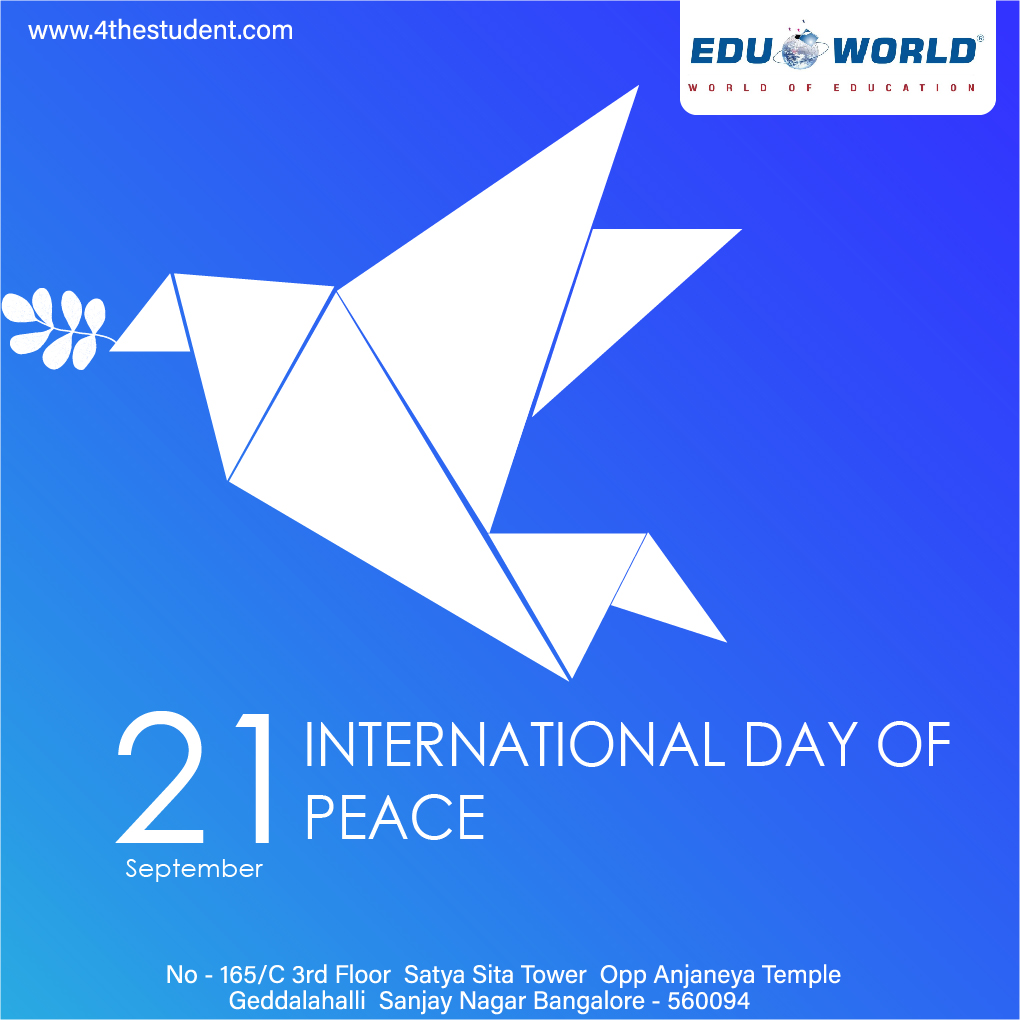The Unified Countries General Gathering has proclaimed September 21st to be the Worldwide Day of Peace; it is to be seen as a day of worldwide truce and peacefulness. The Unified Countries has welcomed all Part States, associations of the Unified Countries framework, provincial and non-legislative associations and people to celebrate the Day in a fitting way, including through schooling and public mindfulness, and to help out the Assembled Countries in laying out a worldwide truce. The current year’s subject is “End racism, build peace”. Otherwise called World Harmony Day, it was later in 2001 that the authority date was announced as September 21. Up to that point, it was seen on the debut meeting of the yearly Broad Gathering, the third Tuesday of September. To honour the day, the Assembled Countries Harmony Ringer is rung at UN Base camp in New York City. The Harmony Chime was given by the Unified Countries Relationship of Japan in June 1954. The chime was projected from coins and awards gave by the agents of the Part Expresses, the Pope, and individuals, including kids from north of 60 unique countries who supported his thought. The chime tower was designed according to the Hanamido (a little sanctuary brightened with blossoms) that represents where Buddha was conceived. The Harmony chime is rung two times every year: on the primary day of spring, at the Vernal Equinox, and on 21 September to praise the Global Day for Harmony. On the Global Day for Harmony, the Assembled Countries Secretary-General rings the ringer to petition God for World Harmony, within the sight of Delegates of Extremely durable Missions and authorities of the UN Secretariat. In 2021, as we recuperate from the Coronavirus pandemic, we are enlivened to think imaginatively and all in all about how to assist everybody with recuperating better, how to fabricate versatility, and how to change our reality into one that is more equivalent, all the more fair, comprehensive, feasible, and better. The pandemic has been joined by a flood in shame, segregation, and contempt, which just expense more resides as opposed to saving them: the infection goes after all without thinking often about where we are from or what we put stock in. Standing up to this shared adversary of humanity, we should be reminded that we are not each other’s foe. To have the option to recuperate from the obliteration of the pandemic, we should reconcile with each other. Also, we should wipe the slate clean with nature. In spite of the movement limitations and monetary closures, environmental change isn’t on stop. What we really want is a green and reasonable worldwide economy that produces occupations, diminishes emanations, and fabricates versatility to environment influences. The possibility of a Culture of Harmony is somewhat new. The term, culture of harmony, came into utilization in 1986 through the Cultura de paz created in Peru and the Seville Articulation on Savagery. The Seville Proclamation on Viciousness was given by a gathering of fifty researchers and researchers from sixteen districts as a report of their investigation of brutality and war. They reasoned that there is no natural destiny for savagery or battle in the human species. People are allowed to make war or harmony. Teachers in each job, in each space, at each level can be important for making a Culture of Harmony. Since, “culture making” happens at each degree of society, whether your work is centred around the level of the person, of local area, of countries, or worldwide it influences culture. Whether your work is centred around creating physical, close to home, mental, or transpersonal limits it influences culture. Each branch of knowledge is an impression of and makes culture.
Edu world observes The International Day of Peace (IDP) as a valuable chance to join teachers and understudies all over the planet in investigating and praising our ability for goodness, participation, and the imaginative capability of the human soul in developing a serene and practical future. The Global Day of Harmony is essential for the work that is going on all through the world to make a Culture of Harmony and peace. From global associations, public gatherings, networks, schools, families to people on each mainland across the planet there exists an emphasis on making harmony. teaching for harmony and participation is an open field of disclosure, and in each undertaking of revelation, of prime significance is the excursion. We have an objective, which guides us enroute, however all our means conveys us to our objective. Instructing for harmony and participation is the excursion of all our means.




